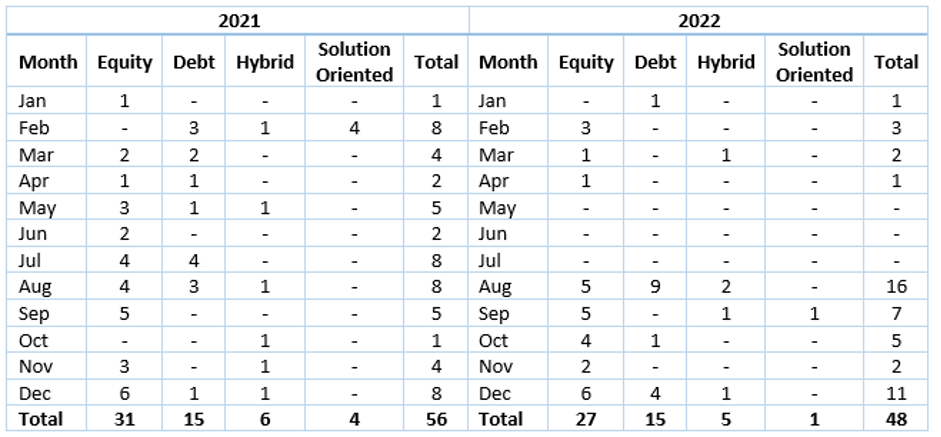Listen to this article
The MF industry launched 123 passive funds from January 2022 to December 2022, as against 49 in the corresponding period during 2021, shows AMFI data. This accounts for a 150% jump despite the three-month NFO ban.
Attributing the rise to the limitless ideation in the passive space, Swarup Mohanty, CEO, Mirae Asset MF explained, “There can be an index for every possible investible universe and a passive fund for each index type. Further, through factors, we can have multiple versions of funds. The point is that there is no curtailing of ideation in passives.”
He added, “Given the plethora of ideas, this is how the passive story grows.”
The industry reported the highest number of NFOs in October 2022. Excluding the NFO ban period i.e. April 2022 to June 2022, July 2022 and September 2022 reported the least NFOs at 3 and 8 respectively.

Category-wise data shows, total passive funds issued in 2022 comprised 84 index funds and 39 ETFs, as against 25 index funds and 24 ETFs in 2021.


“I do agree that up till now the story has been in the favour of index funds. Logically, when we look at the present investible market and current investing population, a bulk of it is non-demat holders and their preference can thus be index funds”, said Swarup.
Adding from the manufacturers’ perspective he said, “Being an ETF issuer ourselves, we issue index funds when there is a lack of liquidity on the debt side. And when the market is liquid, we go through the ETF route.”
Passives Vs Active
While passives reported a 150% rise, their active counterparts reported a 14% decline.
The industry launched 48 active NFOs from January 2022 to December 2022, as against 56 during the corresponding period in the previous year.
It reported the maximum NFOs (16) in August 2022, the month in which the NFO ban was lifted. Category-wise bifurcation shows maximum NFOs were launched in growth/equity oriented category (27) followed by income/debt oriented category (15).





